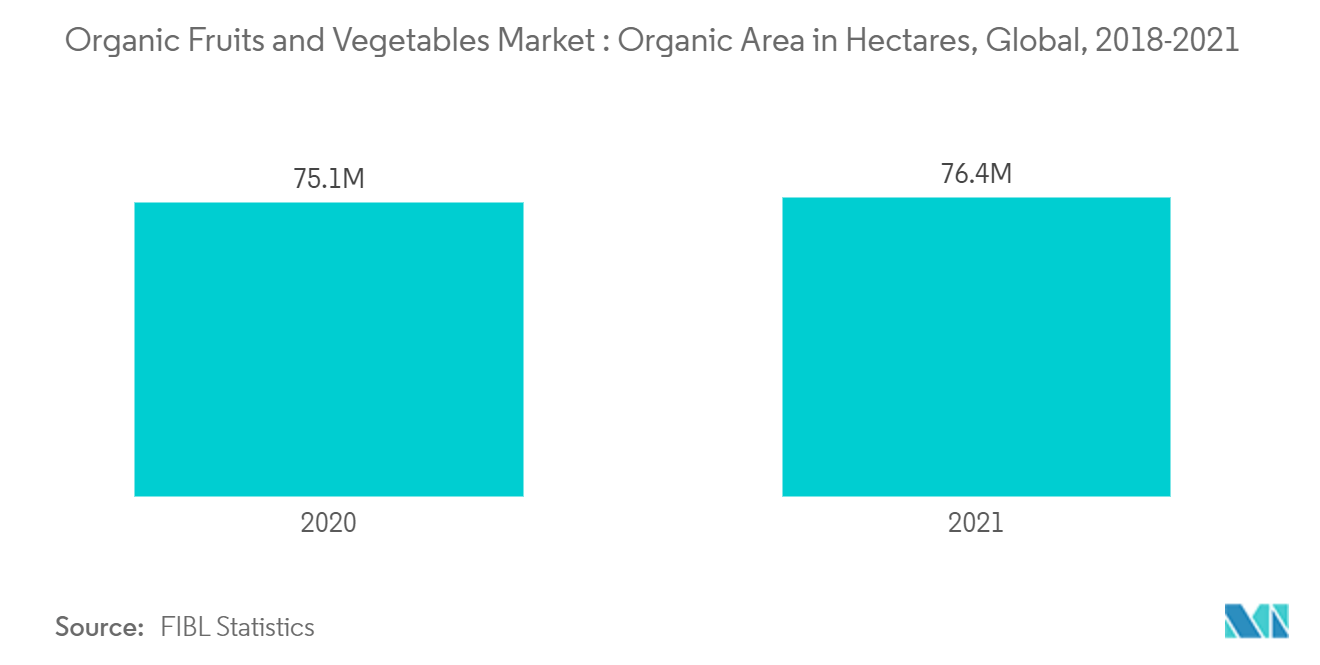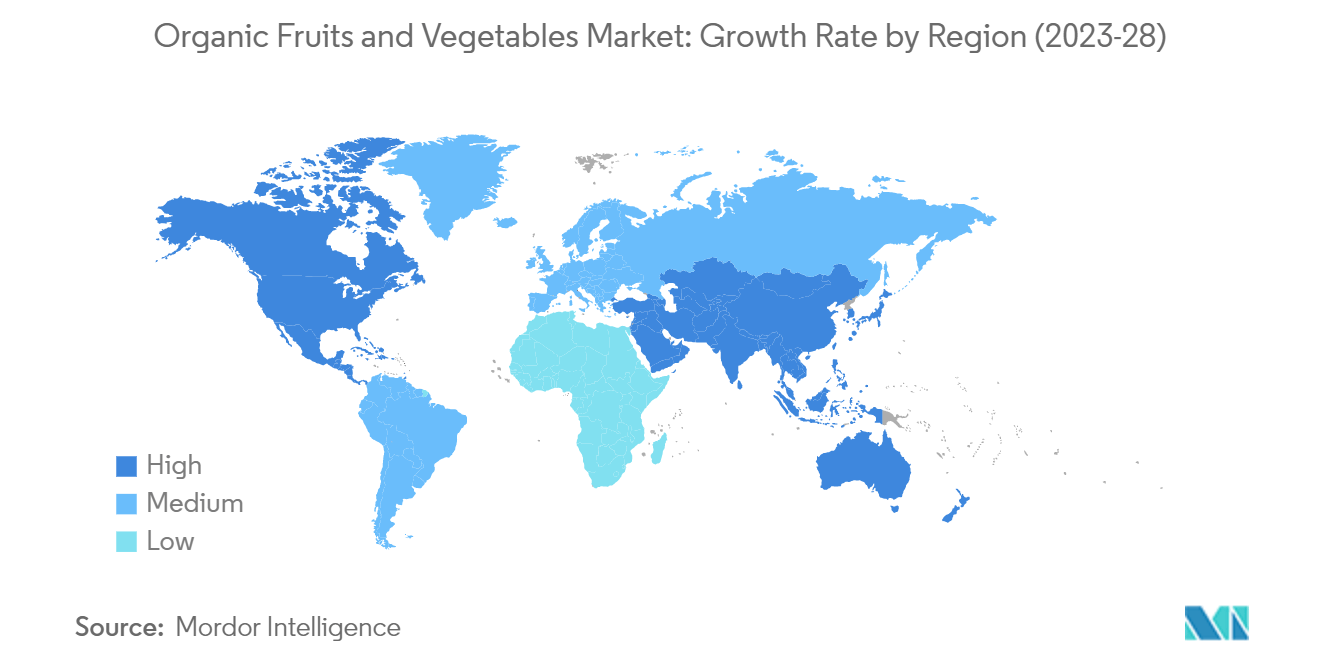Market Trends of Organic Fruits and Vegetables Industry
Increasing Area Under Organic Farming
The area under organic farming is rapidly growing, mainly due to an increase in food safety concerns and farming practices that contribute to a better and more sustainable environment. The rise in demand for organic products is driving farmers across the world to cultivate crops, which include fruits and vegetables. The possibility of farmers switching from conventional farming to organic farming is made easier with the regional regulatory bodies providing the necessary funds supporting the switching cost. Furthermore, the constantly rising demand serves as an opportunity for supermarkets and food store chains to diversify and widen their offerings of organic food, at more competitive prices.
Due to the rising disposable incomes, people around the globe are presently more focused on healthier diets, with more fruit and vegetable inclusion. Moreover, the interest in wellness and immunity has spiked in recent years, leading to a higher demand for Organic fruits and vegetables in the market. This factor is likely to have a significant impact on market growth. Due to the increasing consumer demand, there is a tremendous rise in the area under organic cultivation. For instance, according to the Research Institute of Organic Agriculture FiBL, the organic area globally was 70,984,478.89 hectares in 2018, which increased by approximately 7.6% and reached 76,403,778.32 hectares in 2021.
Organic farming has seen a continued surge in the world both in terms of volume produced and revenue generated. Moreover, in countries like India where the cultivation of organic fruits and vegetables are also export-oriented, and to grow this cultivation GOI is launching several schemes to boost the exports of organic fruits and vegetables. For instance, under the MOVCDNER scheme, GOI promotes third-party certified organic farming of crops of the northeast region through Farmer Producer Organisations (FPOs) with a focus on exports. Farmers are given the assistance of Rs 25,000 (USD 302.1) per hectare for three years for organic inputs including organic manure and bio-fertilizers among other inputs. Support for the formation of FPOs, capacity building, and post-harvest infrastructure is also provided in the scheme.

North America Dominates the Market
The application of organically grown produce has increased progressively over the last few years in the region. The Organic Trade Association says that in 2020, more than 17% of all fruits and vegetables bought by people in North America were found to be organic.
North America holds the largest market share in the organic fruits and vegetables market and is expected to grow during the forecast period, owing to rising disposable income and increased consumer purchasing power. In addition, the growing awareness about health and fitness is driving consumers to excessively invest in organic fruits and vegetables that do not contain harmful chemicals. This is also estimated to contribute significantly to market growth.
The increased focus on sustainable development is a major factor contributing to increased organic farming in North America. Furthermore, as organic farming utilizes more natural fertilizers, such as manure and compost, compared to chemical pesticides, these natural elements help to increase the soil quality of the area. These factors have favorably contributed to the growth in demand for organic fruits and vegetables.
Moreover, artificial chemicals and non-organic fruits and vegetables in skincare and beauty care products lead to severe side effects. Therefore, various skincare and beauty care brands in the region are launching their products with organic labels. These organic skincare and beauty care products comprise organically grown almonds, strawberries, apples, grapes, carrots, oats, and aloe vera, which is further boosting the growth of the market studied in the region.


